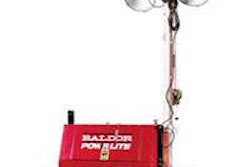After three years of steady nominal growth, the U.S. highway and bridge construction market is expected to flatten in 2009, as recent increases in federal highway investment will likely be offset by weakened state and local highway budgets, according to a November 20 forecast issued by the American Road & Transportation Builders Association’s (ARTBA) top economist.
Dr. William Buechner, ARTBA vice president of economics and research, projects the value of construction work put in place on highways and bridges will be $80.2 billion in 2009, a bare 1.5 percent increase from 2008’s $79 billion.
If construction material costs level off next year, as seems likely following the recent collapse of oil prices and the nation’s economic slowdown, the real volume of construction work should stabilize, and may even improve, after declining about six percent in 2008.
One factor that could considerably brighten the forecast, Buechner says, is for Congress and the president to enact an economic stimulus bill in early 2009 that includes transportation investment. Every $1 billion invested in quick-start highway and bridge projects would add about one percentage point to the 2009 forecast.
The federal highway program should provide a cushion for highway construction next year even without a stimulus bill. The $41.2 billion of highway investment enacted by Congress for FY 2008 — a 5.5-percent increase over FY 2007 — will have its biggest impact during the 2009 construction season as projects started in 2008 ramp up. Another $41.2 billion in the federal highway budget for FY 2009 helps maintain market stability.
“The most critical problem for the highway construction market in 2009 is that state and local governments are facing serious fiscal problems, and some may tap transportation funds or defer transportation investments to meet budgets,” Buechner says in a written statement. “High gas prices this past summer, combined with a slowing economy, have resulted in a 3.3 percent decline in highway miles driven so far this year — thus reducing state gas tax revenue collections.”
The ARTBA economist noted that depressed new car and truck sales have also reduced vehicle registration fee revenues. Both will impact highway investment. At the same time, foreclosures and a decline in home values in many areas of the country are cutting into the property tax revenues that many local governments apply to their highway construction activities.
The recent turmoil in financial markets may also affect the ability of some state and local governments to use bond-financing for transportation projects, which typically provides about five to 10 percent of project funding each year. Bond markets were inoperative in September and interest rates on tax-exempt bonds soared. Since then, rates have eased, but are still above last year’s level, which may temporarily affect plans to issue transportation-related bonds. Nonetheless, on Nov. 4, voters in Alaska, California, and Rhode Island approved new bond issues for transportation improvements, as did voters in various counties in Colorado, North Carolina, Oregon, Texas, and Virginia.
According to the ARTBA forecast, some states have already announced cutbacks in highway and bridge projects in response to budget shortfalls. Maryland will delay at least $1.1 billion of scheduled highway construction projects during the next six years. North Carolina anticipates having to cut $200 million from its highway program by next June. New York State plans to eliminate 10 percent of its projects because of budget difficulties. Other state and local governments are making similar adjustments to the revenue shortfall. Nationwide, the impact is showing up in new contracts awarded for highway and bridge construction projects, which are down $1.7 billion, or 3.7 percent so far in 2008.
Reauthorization of the federal highway and transit programs before September 30, 2009 — the earlier in the year the better — also has market implications, according to ARTBA, since lack of clarity on future federal funding beyond that date could cause some state and local highway agencies to go slow in committing federal funds for new projects.
In addition to steady federal funding and a possible stimulus boost, another bright spot, according to Buechner, is that highway construction costs appear to be easing after rising 11 percent in 2008. The recent decline in the price of oil has already sharply lowered prices for asphalt and diesel fuel. Other materials prices, responding to the weak economy and downturn in housing construction, also appear to be easing. If the lull in prices continues into 2009, as many expect, flat nominal construction spending may actually support more highway and bridge construction activity next year than in 2008.
The ARTBA forecast also addressed other transportation modes.
Public Transit: The value of construction work on subway and light rail projects should hit $4.3 billion in 2008, up 20 percent from $3.6 billion last year. The growth should continue into 2009 and beyond, driven in part by $1.5 billion of contracts awarded so far this year for New York’s 2nd Avenue subway line, according to Buechner. Big contract awards this year and last for projects in Colorado, Oregon, Nevada and Utah should also help boost this market for the next few years.
Airports: By contrast, the airport runway, taxiway and related construction market is in the doldrums this year, Buechner says. An estimated $5 billion of construction work will be performed on airport projects in 2008, down about nine percent from $5.5 billion in 2007. The reason: airport construction funds are being spent on airport terminals, up 29 percent this year to $7.1 billion from $5.5 billion last year. New contract awards for airport projects are down about 21 percent to date, from $1.9 billion in 2007 to $1.5 billion in 2008, offering little hope for a rebound in airport construction during 2009.
(Source: American Road and Transportation Builders Association)











